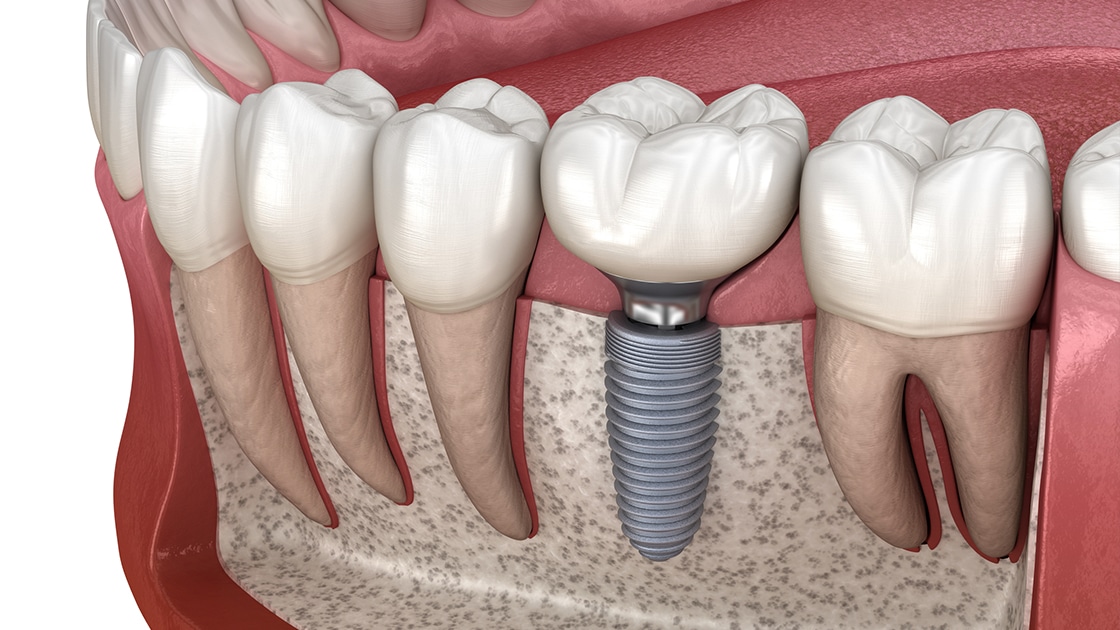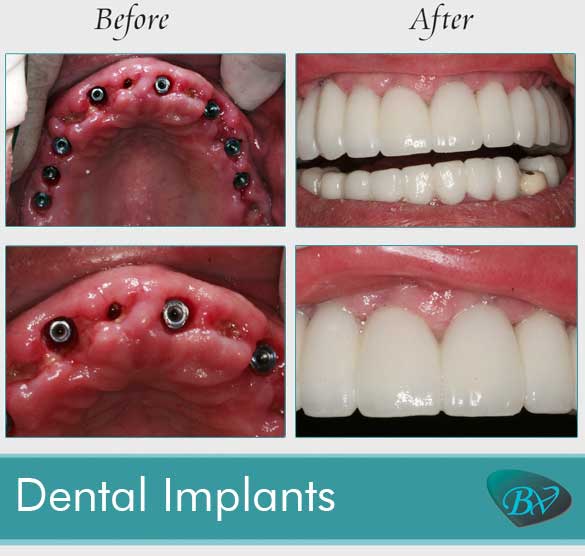The Ultimate Guide To Dental Sense
All About Dental Sense
Table of ContentsThe Ultimate Guide To Dental SenseSome Known Facts About Dental Sense.Dental Sense - An OverviewThe Dental Sense Statements
are clinical gadgets surgically implanted right into the jaw to restore a person's capability to chew or their look. They offer assistance for artificial (fake) teeth, such as crowns, bridges, or dentures. When a tooth is lost as a result of injury or disease, a person can experience issues such as quick bone loss, defective speech, or changes to chewing patterns that cause discomfort.Dental implant systems are composed of an oral implant body and dental implant joint and might additionally include a joint addiction screw. Dental implant vs bridge. The dental implant body is operatively placed in the jawbone instead of the tooth's origin. The oral implant abutment is generally affixed to the implant body by the joint addiction screw and extends via gum tissues into the mouth to support the connected fabricated teeth
(https://penzu.com/p/6de5c74cda18cc8f)Structure of The Oral Implant System choosing dental implants, talk with your dental service provider concerning the potential advantages and dangers, and whether you are a prospect for the treatment. Things to consider: Your total wellness is a vital factor in determining whether you are a great prospect for dental implants, for how long it will require to heal, and how much time the dental implant might remain in area.
Smoking might influence the recovery process and reduce the long-lasting success of the implant. The healing procedure for the dental implant body may take a number of months or longer, during which time you typically have a temporary joint instead of the tooth. the oral implant procedure: Carefully follow the dental hygiene instructions offered to you by your oral company.
The Main Principles Of Dental Sense
Implant failure can lead to the demand for an additional operation to fix or replace the implant system. Brings back the capability to eat Recovers cosmetic look Helps keep the jawbone from shrinking due to bone loss Protects the wellness of the bordering bone and gum tissues Aids keep nearby (nearby) teeth secure Boosts high quality of life Damage to surrounding all-natural teeth during dental implant positioning Injury to the surrounding cells throughout surgical treatment, such as sinus opening Injury during surgery (for example, crack of surrounding jawbone) Inadequate feature, such as really feeling like the teeth do not bite with each other typically A feeling that the tooth is loose or turning in location resulting from an abutment screw loosening up Implant body failing (looseness of the implant body) because of systemic infection, which may be most likely in patients with uncontrolled diabetics issues due to regional infection in bone and periodontals supporting the implant body due to postponed recovery, which may be more probable in patients that smoke Problem cleansing the periodontals around the implant, leading to poor oral health Untreated periodontal illness Post-surgical pins and needles as a result of nerve impingement or damages Always alert healthcare suppliers and imaging specialists that you have oral implants prior to any kind of magnetic resonance imaging (MRI) or x-ray treatments.
FDA is not knowledgeable about any negative events reported for MRI or x-ray treatments with dental implants. Oral implants systems are normally constructed from products that adhere to worldwide agreement criteria of the International Company for Standardization (ISO) or ASTM International. These criteria have details of what makes a safe product.

An oral implant is a framework that replaces a missing tooth. With screw-like tools, the surgeon inserts a dental implant right into the jawbone, and it acts as an anchor for a man-made tooth, called a crown.
The 15-Second Trick For Dental Sense
Some individuals are not eligible for dental implant surgery. It is for oral surgeons to operate people with: acute illnessuncontrollable metabolic diseasebone or soft tissue disease or infectionIf these concerns are solved, a person can have the surgical procedure. In, oral specialists avoid running on people with: If individuals with any of the above undergo oral implant surgical treatment, there is a greater threat of the dental implant stopping working.

Dental dental implant surgical procedure is a customized process. It's not the same for everyone. The following gives a general overview of what you can anticipate your dental practitioner, oral cosmetic surgeon, periodontist or prosthodontist to do: Put the implant surgically. Provide you time to recover. Connect the message and last crown, bridge or denture.
Next off, your cosmetic surgeon will thoroughly place the oral implant into your jaw. If your dental implant is near the front of your mouth, your dental practitioner will certainly make a short-lived tooth for you to use until you recover.
Dental Sense - The Facts
Your company can tell you what to anticipate in your circumstance. During the recovery stage, your jawbone should fuse to the dental implant. This process, called osseointegration, is critical for stability and lasting success. This process can take anywhere from 3 to nine months. Sometimes, it may take much longer.
Once your implant heals, your dentist can connect the abutment (small port article) and your final reconstruction (crown, bridge or denture). This typically takes about one hour to complete and may require a 2nd minor surgical treatment. You shouldn't feel any kind of discomfort throughout your dental implant treatment since your company will make use of medication to numb your periodontals.